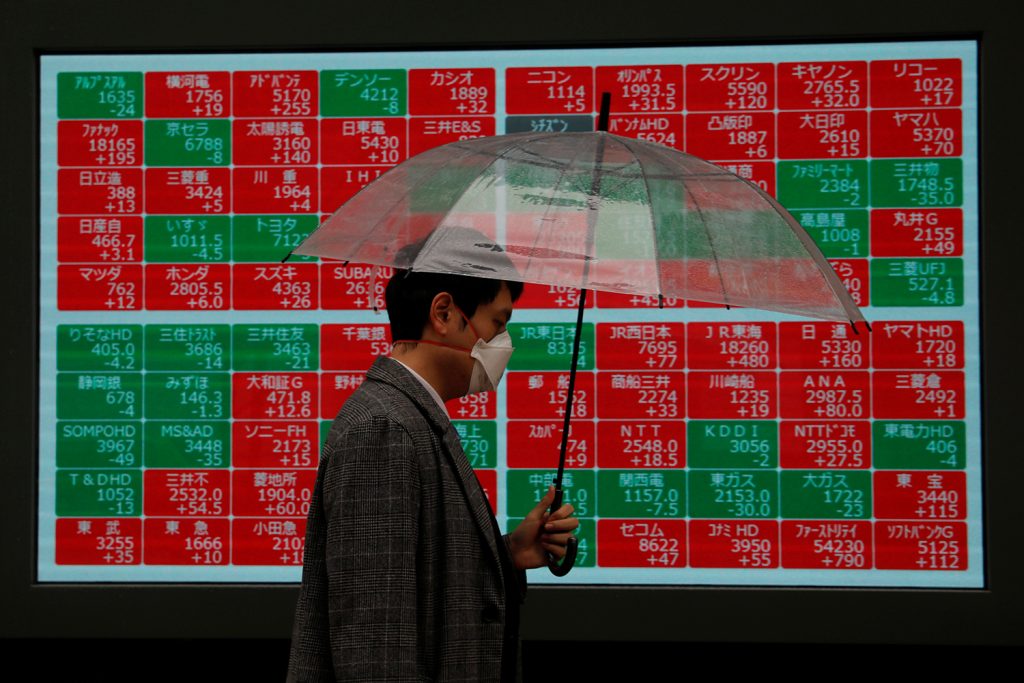EQUITIES
Shares in Asia-Pacific were mixed in Friday trade as investors react to hot U.S. inflation report.
South Korea’s KOSPI fell 0.53%, the S&P/ASX 200 in Australia declined 0.87%, and the S&P BSE Sensex Index in India shed 1.56%.
Elsewhere, the Shanghai composite rising 0.34% while the Hong Kong’s Hang Seng index nudged fractionally higher. In Southeast Asia, the Straits Times index in Singapore climbed 0.22%.
Markets in Japan are closed on Friday for a holiday.
U.S. markets sold off more aggressively overnight, with the Dow Jones Industrial Average ended 1.47% lower to 35,241.59. The S&P 500 lost 1.81% to 4,504.08, and the Nasdaq Composite plunged 2.1% to 14,185.64.
OIL
Oil prices eased on Friday as higher dollar weighed. The hot U.S. inflation fanned worries about aggressive interest rate hikes, while investors also await the outcome of U.S.-Iran talks. The Iranian nuclear talks appear to be progressing, holding prices back.
The Brent now traded at $91.16 per barrel, and the U.S. crude futures traded at $89.72 per barrel.
Both benchmarks are in line for their first weekly decline after seven consecutive weekly gains, though had climbed to a seven-year high earlier in the week.
CURRENCIES
Investors monitored moves in U.S. bond yields on Friday, after the U.S. CPI for January showed a hotter-than-expected rise. The inflation number likely puts more pressure on the U.S. Fed to act more aggressively with rate hikes.
Two-year notes, which typically move in step with interest rate expectations, shot up 22 basis points to 1.58% after the data. The benchmark U.S. 10-year Treasury yield crossed 2% Thursday stateside after starting the year at 1.51%, and now last sat at 2.033% on Friday. Yields move inversely to prices.
The U.S. dollar index was stronger at 95.977 on Friday.
GOLD
Gold prices eased on Friday, capped by the combination of a strong dollar and soaring bond yields. Though the safe haven bullion still headed for about 1% gains so far this week, the highest since early January, as inflationary risks and geopolitical tensions lifted demand.
Spot gold was eased 0.11% to $1,824.50 per ounce, while U.S. gold futures fell 0.66% to $1,825.20.
Spot silver fell to $23.06 per ounce but is still up about 2.7% for the week. Platinum was down 0.4% at $1,022.03, and palladium dropped 0.9% to $2,235.52, set for a second weekly loss.
ECONOMIC OUTLOOK
Asian share markets were mixed in Friday trade, as investors in the region reacted to the Thursday release of a hotter-than-expected U.S. consumer inflation report that pushed the 10-year Treasury yield past 2%.
Broader moves across the equities followed U.S. data on Thursday which showed consumer prices surged 7.5% last month on a year-over-year basis, topping economists' estimates of 7.3% and marking the biggest annual increase in inflation in 40 years. Following this, investors are betting that the U.S. Fed would raise the federal funds rate by a half-percentage point in March.
A hawkish comment from a Federal Reserve official meanwhile fuelled bets on U.S. interest rates being hiked more aggressively. St. Louis Federal Reserve Bank President James Bullard said the data had made him "dramatically" more hawkish. Bullard, a voting member of the Fed's rate-setting committee this year, said he now wanted a full percentage point of interest rate hikes by July 1.
Russia and Ukraine said they had failed to reach any breakthrough in a day of talks with French and German officials, while Britain said the "most dangerous moment" in the West's standoff with Moscow appeared imminent, as Russia held military exercises in Belarus.














